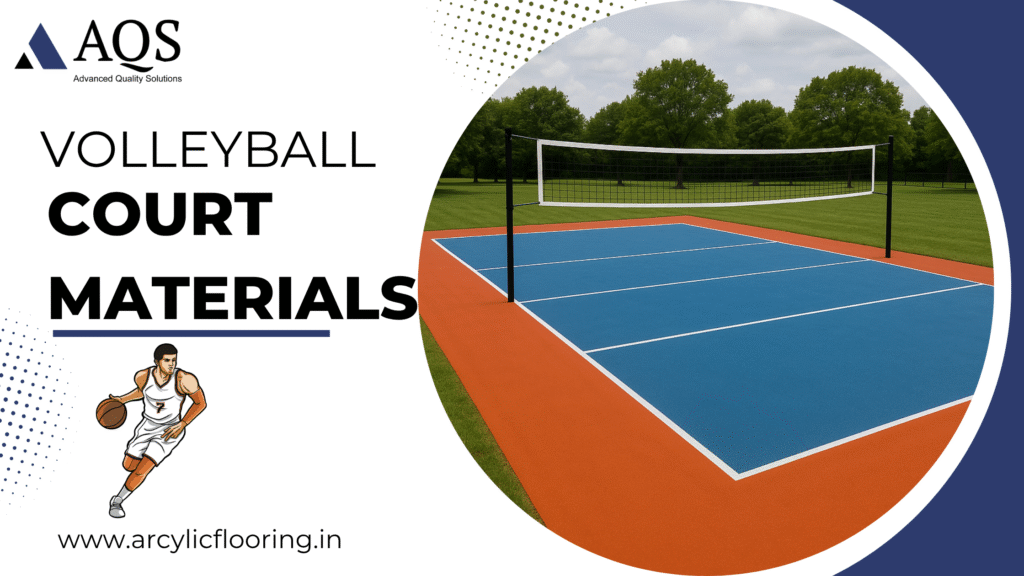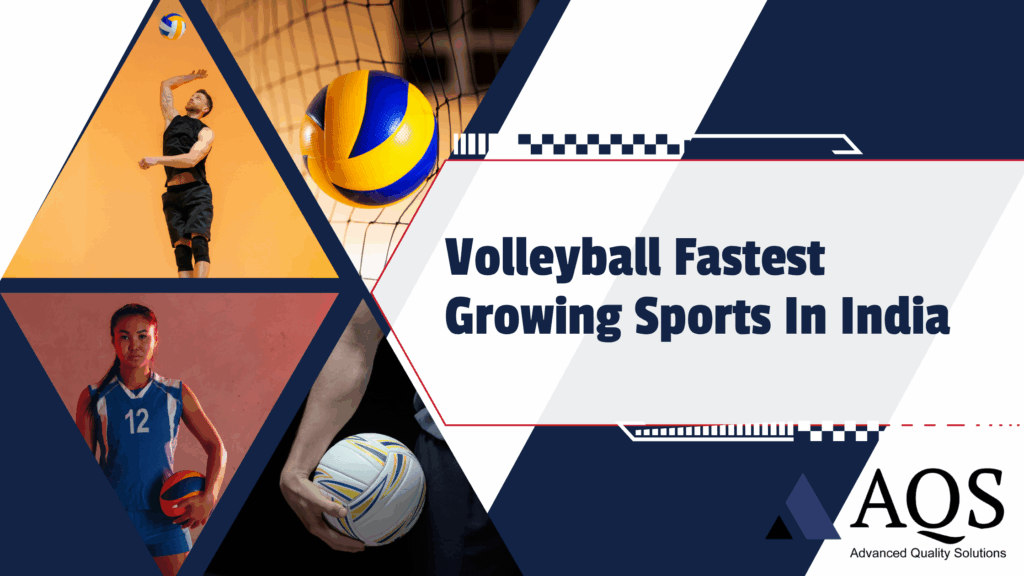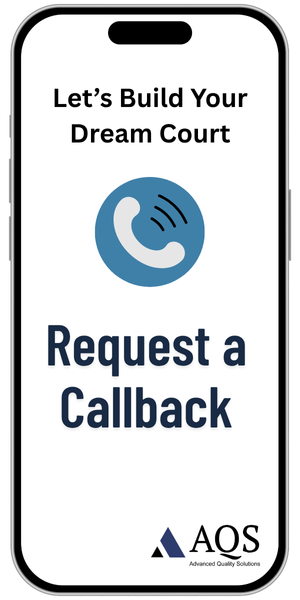
Understanding the dimensions of a Volleyball Court is a must, especially when it comes to building and maintaining a top notch sports facility that’s going to be used by a school, a residential club, a sports academy or even just a private facility for that matter. Whatever the project, taking the time to get the measurements right is crucial to making sure the game flows smoothly, the players are safe and the whole thing holds up over the long term.
AQS, a leading manufacturer of synthetic acrylic sports flooring in India, has spent over a decade developing performance-driven volleyball court systems tailored to Indian climate and play intensity. With more than 2000+ sports courts supplied nationwide and a strong footprint in both government and private infrastructure projects, AQS has become synonymous with engineering precision, material excellence and consistent results on every court. Each AQS volleyball flooring system from non-cushion acrylic builds to advanced cushioned multi-layer constructions is designed for superior grip, UV resistance, weather stability and long-term surface strength.
This guide takes a real close look at the official size of a volleyball court and its boundaries plus the run-off areas where players can jump and dive without going over the edge. We’ll also cover material recommendations, the steps involved in building a court, flooring systems, the colours you can use and even some insights into getting the court installed properly.
Official Volleyball Court Dimensions

Official volleyball court dimensions, as set by the FIVB and used all over India in schools, academies, clubs, and stadiums, is the standard way to make sure the game is fair and fun for both pros and amateurs alike. Many top-notch projects using synthetic acrylic courts use AQS-approved stuff to get the dimensions just right.
These dimensions are designed to ensure that every court – whether it’s a recreational one or a pro stadium – has got the right amount of space for everyone to move around, play the game and have a great time in the process.
Standard Volleyball Court Size
- Length: 18 meters (59 feet) — That gives everyone enough space to play out those rallies and get from one end of the court to the other with ease – and that’s even more important for those attack zones.
- Width: 9 meters (29.5 feet) — It creates a nice balance so that both teams get to position themselves and come up with defensive plans without feeling too cramped.
The whole 18m × 9m court is the main play area where all the action happens – serving, blocking, spiking and the rest. Using the right volleyball flooring materials from AQS will make sure the bounce is even all over the court.
Run-Off Area
You need a bit of extra space around the court for safe movement – at least 3 meters all the way around. That way, nobody gets knocked into or gets hurt while grabbing that stray volleyball. For pro tournaments, people prefer at least a 5-6 meter free zone for some serious action on the court.
All that extra space makes the game safer and is just plain better for competitive play. AQS installations make sure everything is good and level, so you don’t have to worry.
Free Playing Space
You need at least 7 meters of vertical clearance to stop the ball from hitting those ceilings above the court. If you’re playing a premium volleyball court, you should go for a 12.5-meter ceiling clearance. That gives you all the room you need for those high-level smashes and jump serves.
Having enough overhead space is key to making sure the game keeps going smoothly. AQS teams follow all the clearance rules to the letter when building the court.
Volleyball Court Marking Dimensions
- Boundary Lines (5 cm width): These lines define the outer limits of the volleyball playfield and ensure all in-play and out-of-play decisions are accurate. Their uniform width provides clear visibility for players and referees.
- Centre Line: The centre line divides the full 18m × 9m volleyball court into two equal 9m × 9m sections. It helps in player positioning and determines legal crossing during play.
- Attack Line (3 meters from centre line): This line marks the zone where back-row players must take off behind while attacking. It helps to maintain fair play by distinguishing front-row and back-row responsibilities.
- Service Area (Behind the end line): The server must stand in this area while serving the ball into play. It provides space for controlled serving motions and ensures the serve starts from the correct position.
- Substitution Zone (Near the scorer’s table): This zone designates where players must enter and exit during substitutions. It keeps team rotations organized and coordinated with the scoring officials.
- Libero Replacement Zone (Between attack line and end line): This area is used specifically for libero exchanges without needing referee approval. It allows quick, smooth transitions for defensive specialists during rallies.
Volleyball Net Height & Posts Specifications
- Men’s Volleyball (Net Height: 2.43 m)
The official men’s volleyball net is set at 2.43 meters, ensuring optimal bounce, competitive play, and international-standard performance during matches. - Women’s Volleyball (Net Height: 2.24 m)
The women’s net height is 2.24 meters, designed to support skill-based rallies and maintain the correct competitive balance as per global guidelines. - Posts & Setup (1 Meter Outside Sideline)
Volleyball posts are positioned 1 meter outside the sideline to create a safe free-play zone and prevent any interference during fast gameplay. - Post Material Requirements (Firm, Padded, Rust-Proof)
The posts must be rigid, well-padded, and constructed from rust-proof metal to withstand outdoor conditions and ensure long-term durability and player safety.
Why Synthetic Acrylic Volleyball Courts Are Growing in India
The demand for synthetic volleyball court flooring continues to rise. Because of its superior performance, long-lasting durability, and excellent resistance to India’s diverse climate conditions. Compared to clay or mud surfaces, acrylic courts deliver all-weather playability, faster drying, and significantly lower maintenance requirements for academies, schools, and outdoor sports complexes.
Benefits of Synthetic Acrylic Volleyball Court Flooring
- Non-slip texture for enhanced grip: The fine silica-textured finish ensures safe footwork and reduces slipping incidents, offering better player control during fast-paced rallies.
- UV-resistant colors ideal for Indian climate: High-quality pigments prevent fading under harsh sunlight, keeping the court vibrant and visually clear throughout intense outdoor use.
- Seamless and crack-resistant surface: Multiple acrylic layers create a smooth, joint-free finish that prevents surface cracks and ensures long-term structural stability.
- Shock-absorbing cushioned layers: Cushion systems reduce impact on knees and joints, delivering a comfortable play experience ideal for training and competitive matches.
- Even bounce and consistent traction: The uniform acrylic coating ensures predictable ball response and stable footing, improving gameplay accuracy for all skill levels.
- Long lifespan with minimal maintenance: Synthetic acrylic courts require only periodic cleaning and recoating every few years, making them highly cost-effective for long-term use.
Facilities across India increasingly choose advanced acrylic systems from the Best Volleyball Court Flooring Manufacturer in India to achieve long-lasting performance, better aesthetics, and professional-grade durability.
Volleyball Court Flooring Options in India
1) Synthetic Acrylic Volleyball Court Flooring
Most preferred for schools, academies, and outdoor sports complexes due to its durability and all-weather performance. The system delivers consistent bounce, excellent grip, and long-lasting surface stability for competitive outdoor volleyball.
Features:
- 5-layer, 6-layer, 8-layer & cushioned acrylic systems: These multilayer builds provide options for budget, comfort, and shock absorption while enhancing the overall surface life.
- UV-resistant acrylic topcoat: Special pigments protect the surface from sun damage, ensuring vibrant colors even in extreme Indian summers.
- Fine silica-sand textured finish: The textured coating improves traction, reducing slips and offering better control during fast-paced rallies.
- Long-lasting color stability: Acrylic coatings retain brightness for years, avoiding chalking and fading common in low-grade outdoor surfaces.
- Suitable for Indian weather conditions: Built to withstand heat, humidity, rain, and dust, making it ideal for long-term outdoor usage across India.
2) PVC Vinyl Indoor Flooring
A preferred option for indoor volleyball courts that require flexibility, comfort, and injury prevention. Its cushioned structure minimizes impact on joints, making it ideal for continuous indoor training sessions.
3) Polyurethane (PU) Sports Flooring
A premium indoor flooring system offering excellent shock absorption and long-term durability. It provides a smooth, seamless, and high-performance surface suited for professional volleyball facilities.
4) Asphalt or Concrete Base + Acrylic Coating
Widely used for outdoor volleyball courts due to affordability and low maintenance. The combination offers a strong structural base covered with weather-resistant acrylic layers for extended lifespan.
How Volleyball Court Makers Build a Professional Court
Professional volleyball court manufacturers and volleyball court contractors follow a precise, engineering-based construction process to ensure long-term durability, consistent playability, and safety. Every stage—from foundation to final markings—is executed with accuracy and weather-resistant materials.
Step 1: Base Preparation
- Concrete M20 grade or asphalt base
A solid, high-density base provides structural stability, supports heavy loads, and ensures the flooring system performs uniformly over many years. - Slope of 1:100 for drainage
This engineered slope allows rainwater to naturally flow outward, preventing puddling and protecting the acrylic surface from moisture damage. - Smooth finishing to eliminate undulations
A finely levelled base ensures consistent ball behavior, eliminates surface irregularities, and enhances traction for competitive gameplay. - No water stagnation after rainfall
Proper drainage planning ensures the court dries quickly, maintaining long-term durability and reducing the risk of cracks or surface deterioration.
Step 2: Application of Acrylic Layers
A professional synthetic acrylic volleyball court uses a multi-layered system designed to deliver grip, UV stability, cushioning, and long-term performance.
- Primer Coat: Acts as a bonding agent between the base and acrylic system, creating strong adhesion and preventing peeling or delamination over time. Essential for sealing the surface and ensuring uniform absorption of subsequent acrylic layers.
- Resurface Layer: Fills pores, repairs micro-imperfections, and creates a smooth foundation for additional layers. Enhances the durability of the flooring and improves the consistency of traction and ball movement.
- Cushion Layers (Optional): Made from rubberized or EPDM-based cushioning materials that absorb impact and reduce player fatigue. Ideal for professional or high-usage courts where injury prevention and comfort are critical.
- Color Coats: High-quality UV-resistant acrylic paints provide vibrant color, long-lasting finish, and superior resistance to sun, heat, and rain. These coatings deliver anti-slip texture and ensure uniform traction for fast, competitive play.
- Line Marking: Applied using durable, high-visibility acrylic line paint enriched with silica for anti-slip performance. Ensures clear boundaries and long-term visibility even with intense gameplay and outdoor exposure.
Professional volleyball court installers use certified materials, weather-resistant acrylic formulations, and precise application techniques to maximize life, performance, and safety of the complete volleyball playfield.
Outdoor Volleyball Court Construction Cost in India
The cost varies based on:

- Base type (concrete/asphalt): The foundation material significantly impacts durability and cost of volleyball court, with concrete generally being more stable and long-lasting. Asphalt is quicker to install but may require resurfacing sooner depending on usage and weather.
- Number of acrylic layers: More layers increase surface performance, grip, and lifespan while also raising material and labor costs. Courts with 6–8 layers offer better cushioning and UV resistance compared to basic 3–4 layer systems.
- Cushion or non-cushion system: Cushion systems provide added shock absorption and player comfort but cost more due to multiple elastomeric layers. Non-cushion courts are budget-friendly and suitable for high-traffic outdoor installations.
- Location & transportation: Transporting materials and workforce to remote or difficult sites increases total project cost. Urban projects may benefit from faster access but could involve higher labor rates.
- Ground leveling requirements: Uneven land requires cutting, filling, or compaction, which adds extra civil work expenses. A properly leveled base ensures long-term performance and prevents water stagnation.
- Court fencing or lighting additions: Adding MS fencing, PVC-coated mesh, or LED sports lighting enhances safety and usability. But increases the overall budget of the volleyball court. Many institutions prefer complete turnkey courts with fencing for controlled access.
Approximate Cost Range of Volleyball Court
- Acrylic non-cushion court (₹180 – ₹300/sq.ft): A cost-effective option offering durability and reliable performance for schools, clubs, and community grounds. Ideal for high-usage outdoor facilities with low maintenance.
- Acrylic cushioned court (₹280 – ₹450/sq.ft): Multiple cushion layers improve comfort, grip, and shock absorption for professional-level play. Recommended for academies, premium sports complexes, and residential societies.
- Complete turnkey setup with base (₹5.5 lakh – ₹8.5 lakh): Includes base construction, acrylic flooring, markings, poles, and accessories. Price varies based on site conditions, customization, and additional infrastructure requirements.
These are indicative estimates for most Indian locations. Actual cost depends on local labor rates, site conditions, and material selection.
Maintenance Tips for Long-Lasting Synthetic Acrylic Volleyball Court Floors
- Regular Cleaning: Remove dust, leaves, and debris regularly to keep the surface smooth and safe. Consistent cleaning prevents abrasion and preserves the topcoat texture for optimal gameplay.
- Avoid Heavy Vehicles: Restrict vehicle movement on the court to prevent cracks, depressions, and structural damage. Heavy loads can compromise the acrylic layers and reduce court durability.
- Inspect Annually: Conduct yearly inspections to identify early signs of wear, cracks, or fading. Timely repairs prevent minor issues from becoming costly damage in the long run.
- Recoat Every 5–7 Years: A fresh acrylic recoat restores ball bounce, grip, and vibrant court color. This periodic resurfacing extends the life of the flooring and maintains professional play quality.
- Maintain Drainage Routes: Ensure drainage paths remain open to avoid water stagnation during rain. Proper water flow prevents surface deterioration and protects acrylic layers from premature damage.
Choosing the Best Volleyball Court Flooring Manufacturer in India
- ITF-standard acrylic systems: AQS delivers internationally certified acrylic systems engineered for consistent performance, accurate ball response, and long-term stability on volleyball playfields.
- Multi-layer cushioned flooring: Advanced cushioned acrylic layers from AQS enhance shock absorption, reduce player fatigue, and improve comfort during high-intensity gameplay.
- UV & weather-resistant coatings: AQS formulations are designed to withstand India’s extreme temperatures, rain, and UV exposure, ensuring bright, durable colors throughout the court’s lifespan.
- Durable, anti-slip texture: The flooring provides a textured, non-slip finish using premium silica-sand blends that ensure traction, reduce skidding, and enhance player safety.
- Professional installation support: We work with trained volleyball court installers and contractors to ensure precise application, accurate markings, and long-lasting surface integrity.
- Long-term warranty: Our high-quality systems offer reliable warranties backed by proven material durability, ensuring confidence and trust for sports facilities across India.
- Certified product quality: The materials undergo strict quality checks, offering consistency, crack resistance, and compliance with international sports flooring standards.
- AQS remains one of India’s top volleyball court flooring manufacturers, offering a perfect balance of bounce, grip, and durability for outdoor and indoor volleyball courts.
Conclusion
A well-designed volleyball court begins with accurate measurements, precise volleyball court dimensions, high-quality materials, and professional installation. With India’s rising demand for weather-proof, low-maintenance, and high-performance outdoor courts. Synthetic acrylic volleyball court flooring has become the preferred solution for schools, academies, clubs, and residential projects.
From court size to material selection, construction, colors, and installation, this guide helps in the complete structure of a world-class volleyball court. Choosing trusted volleyball court manufacturers, volleyball court contractors, and volleyball court installers ensures safety, durability, and superior play experience.
Frequently Asked Questions
The standard volleyball court size id 18m × 9m.
Outdoor volleyball court cost ,₹180–₹450 per sq.ft depending on system type.
Synthetic acrylic systems offer the best performance for outdoor courts.
Acrylic volleyball court last 5–7 years before resurfacing is needed.
Blue, green, red, orange, and grey are the most popular colors for a volleyball court.




